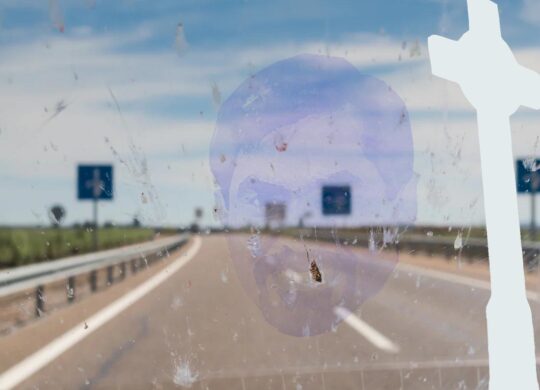Splat!

Andrew Van Dam had an interesting analysis the other day in The Washington Post: “Wait, Why Are There So Few Dead Bugs on My Windshield These Days?”
He’s been noticing it. Long summer trips without those tiny corpses gone splat! on your windshield and grille and headlamps and all.
Now, many folks can’t remember the last time they had to scour the bug gore from their RAV4. It feels like a fundamental pillar of the planet’s ecology has snapped.”
Apparently windshield splats are valid ecological data, and it ain’t good news.
Anders Pape Moller, a Danish biologist, was one of the first to realize that windshields were useful bug-counting devices. In the mid-1990s, he got it in his head that counting windshield splatters might help track difficult-to-measure insect populations. He couldn’t persuade a graduate student to take up the observations, so he hit the roads himself.
Every summer, he and his assistants drove battered budget vehicles back and forth, hundreds of times, along the same rural routes studded with farms in the north of Denmark’s Jutland peninsula. Speeds constant. Temperature and wind controlled for. Etc. And they counted the bugs that went splat!
From 1996 to 2017, insect splatters fell by 80 percent on one of the routes Moller regularly travels. On the other, longer stretch, they plunged 97 percent. Conventional measures show similar trends, and more recent observations have seen even sharper declines, Moller told The Washington Post.
A broad decline in insect populations worldwide is apparently under way.
What about cars with better aerodynamics, you ask? Maybe it just keeps bugs from going splat!
The WaPo inquired of experts in the arcane art of computational fluid dynamics, but they were skeptical. Yes, today’s sleek sedans can have half the drag of the land boats that ruled the road just a generation or two ago. But that improved airflow won’t do much for a bug. For starters, many aero improvements happen on the rear of the car rather than the bug-hitting front. But more importantly, it’s just surprisingly difficult to use air to push a bug out of the way of an onrushing Buick.
In any case other more regular studies of insect populations corroborate this windshield research, even those looking at bug splatters on license plates, which haven’t undergone any aerodynamic change over the years at all.
The fact is there are fewer dead bugs regardless of aerodynamics.
Sad, despite the fact that there about a million different species of insects known. And estimates of 6–12 million more species unknown. Insects, likely 90% of all animal forms on earth, are estimated to number some 10 quintillion (10,000,000,000,000,000,000) at any given time.
The Creator God is just awesome!
He made the moon for appointed times;
the sun knows its setting.
You order darkness and it becomes night,
in it every beast of the forest swarms.
The young lions roar for prey
and to seek from God their sustenance.
The sun rises, they withdraw,
and in their dens they lie down.
Psalm 104:19–22
How Your works have abounded, Yahweh!
All of them in wisdom You have made—
the earth is full of Your possessions:
here is the sea, great and wide in reach;
there are swarms without number,
animals, small with great.
Psalm 104:24–25
All of them, they wait for You
to give their sustenance at its time.
You give to them, they gather;
You open Your hand, they are satiated with good.
…
Let the glory of Yahweh be forever!
Psalm 104:27–28, 31
SOURCE:
The Washington Post











 Abe Kuruvilla is the Carl E. Bates Professor of Christian Preaching at The Southern Baptist Theological Seminary (Louisville, KY), and a dermatologist in private practice. His passion is to explore, explain, and exemplify preaching.
Abe Kuruvilla is the Carl E. Bates Professor of Christian Preaching at The Southern Baptist Theological Seminary (Louisville, KY), and a dermatologist in private practice. His passion is to explore, explain, and exemplify preaching.
2 Comments
I had been noticing the same thing, far fewer splats and sadly I see very few fireflies anymore.
I love all of your informative tidbits!
Hope you are doing well — Have a Blessed Thanksgiving!!!